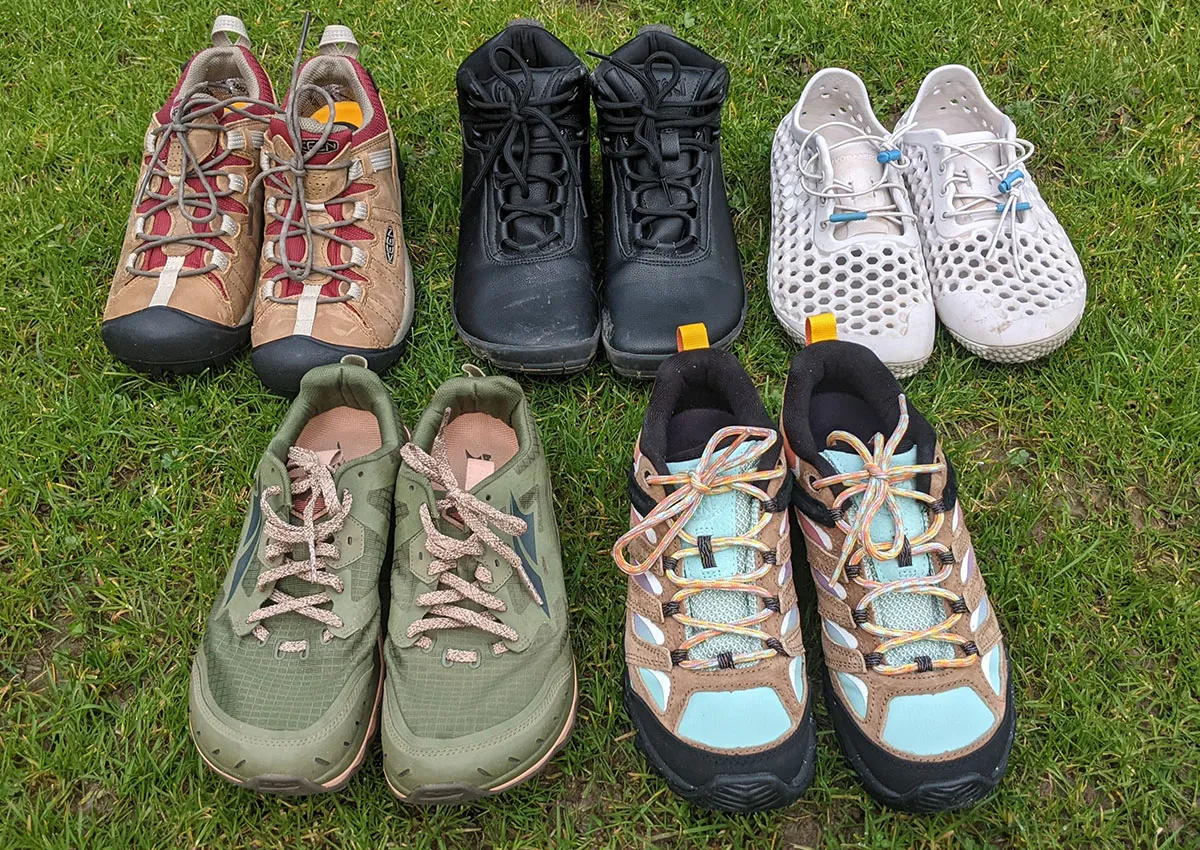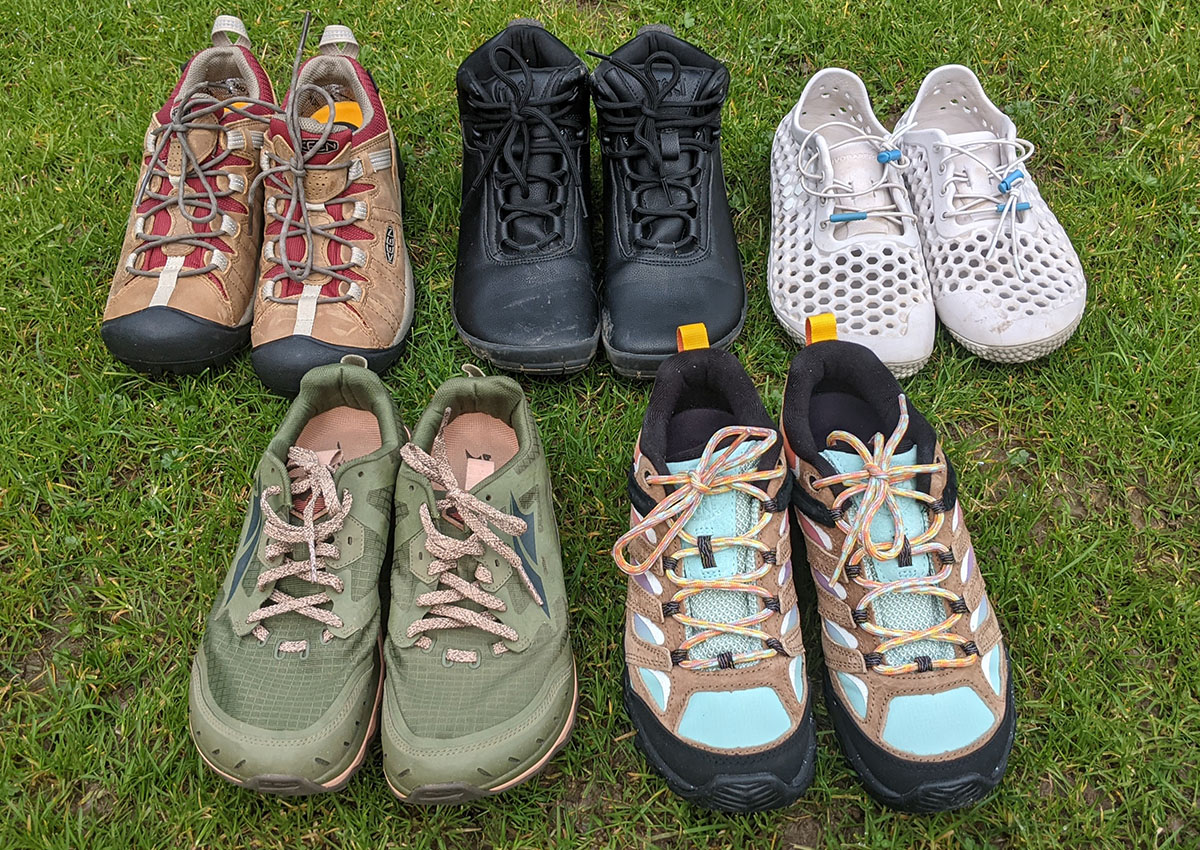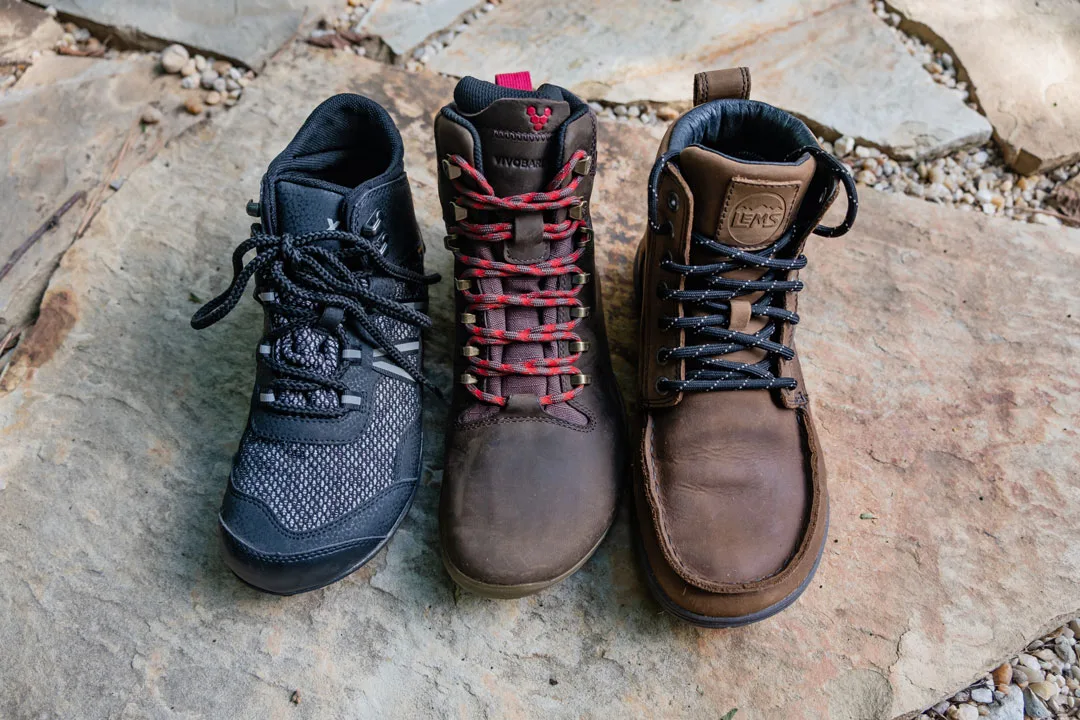
The Complete Guide to Wide Toe Box Hiking Boots: Comfort, Performance, and My Trail-Tested Recommendations
Why Wide Toe Box Hiking Boots Matter

When I first started hiking seriously in the Cascade Mountains, I made the classic mistake of choosing boots based purely on brand reputation and aesthetics. Like many hikers, I assumed that breaking in tight boots was just part of the process. After countless miles of discomfort and several lost toenails, I discovered the game-changing benefits of wide toe box hiking boots.
The science behind wide toe boxes is compelling. Dr. Sarah Mitchell, a podiatrist I consulted during my research, explained that our feet naturally splay when bearing weight – something that narrow boots prevent entirely. This natural spreading helps distribute pressure evenly and provides a more stable platform for navigation on uneven terrain. When your toes are compressed, you lose this natural stability mechanism and force your feet to work harder.
Beyond comfort, wide toe box hiking boots offer significant health advantages. They reduce pressure on bunions and hammertoes, prevent ingrown toenails, and decrease the likelihood of developing neuromas. For hikers planning long-distance adventures, these benefits become even more crucial as feet naturally swell throughout the day.
During my thru-hike of the John Muir Trail, I witnessed firsthand how proper toe space can make the difference between completing a journey and heading home early. Fellow hikers with traditional narrow boots were dealing with constant pain, while those of us wearing wide toe box hiking boots maintained comfort throughout the 211-mile journey.
Pro Tip from the Trail: Even if you don't have wide feet, consider trying wide toe box boots during your next gear fitting. The enhanced comfort and natural foot mechanics often convert even skeptical hikers.
My Top Wide Toe Box Hiking Boot Recommendations
After extensively testing dozens of models across various terrains and conditions, I've narrowed down my recommendations to five exceptional wide toe box hiking boots that excel in different scenarios. Each has earned its place through rigorous field testing on everything from day hikes in the Olympic Peninsula to multi-day adventures in Glacier National Park.
🏆 KEEN Targhee IV Mid - Overall Best Choice

The KEEN Targhee line has been my go-to recommendation for hikers seeking reliable, comfortable wide toe box hiking boots for over five years. The newest Targhee IV iteration maintains everything I loved about previous versions while adding improved waterproofing and durability.
Why I recommend it: During a week-long trek through Olympic National Park's wettest regions, these boots kept my feet completely dry while providing exceptional comfort across rocky terrain, muddy trails, and steep descents. The wide toe box accommodates natural foot swelling without creating pressure points.
🥾 Altra Lone Peak Hiker 3 - Zero Drop Innovation
For hikers interested in more natural foot mechanics, the Altra Lone Peak Hiker 3 represents the perfect intersection of wide feet accommodating design and zero-drop philosophy. After transitioning to these boots gradually, I experienced significantly less lower leg fatigue on long hikes.
Trail-tested performance: These boots excelled during my traverse of the Wonderland Trail around Mount Rainier. The FootShape toe box provided ample room for my feet to function naturally, while the zero-drop platform improved my overall hiking posture and reduced knee strain.
Comprehensive comparison of popular wide toe box trail shoes from an experienced hiker's perspective
⛰️ KEEN Targhee II Mid - Proven Reliability
While the newer Targhee IV gets most attention, the Targhee II remains an exceptional value for hikers seeking proven wide toe box hiking boots performance. I've personally put over 800 miles on my pair, and they show remarkably little wear despite challenging conditions across the North Cascades.
Long-term durability: These boots accompanied me through a summer season working as a wilderness guide, enduring daily use across varied terrain. The wide toe box maintained its shape and comfort throughout this intensive testing period.
For hikers dealing with specific foot conditions, I also recommend exploring specialized options. Those with plantar fasciitis should consider hiking boots designed for plantar fasciitis, while individuals with bunions may benefit from bunion-friendly hiking boots.
Complete Buying Guide and Fit Tips
Selecting the perfect pair of wide toe box hiking boots involves more than simply choosing a larger size. Through years of fitting boots for clients at outdoor retail stores and my own extensive testing, I've developed a systematic approach that ensures optimal fit and performance.
Proper Sizing Guidelines
- Shop for boots in the afternoon when feet are naturally swollen
- Measure both feet - use the larger foot for sizing
- Allow thumb-width space between longest toe and boot front
- Ensure no pressure points across the toe box width
Common Fitting Mistakes
- Assuming you need the same size across all brands
- Trying on boots with thin cotton socks
- Ignoring heel slippage in favor of toe room
- Choosing boots too early in the day
Understanding Width Classifications
The footwear industry uses specific width classifications that can be confusing for consumers. During my time working retail, I frequently encountered customers who didn't realize they needed wide-width options. Here's what you need to know:
Many hikers benefit from best hiking boots for wide feet even if they don't typically wear wide-width shoes in daily life. The combination of thick hiking socks, foot swelling during activity, and the need for toe room makes wide widths advantageous for many outdoor enthusiasts.
Break-In Process and Timeline
Proper break-in is crucial for maximizing the comfort and performance of your wide toe box hiking boots. I learned this lesson the hard way during an early backpacking trip where inadequate break-in led to severe blistering that ended my adventure prematurely.
Week 1: Wear boots for 1-2 hours daily around the house with hiking socks
Week 2: Take short walks (1-2 miles) on familiar trails, gradually increasing distance
Week 3: Attempt longer hikes (3-5 miles) with a light pack to test comfort
Week 4+: Gradually increase to full hiking distances with your typical pack weight
My Personal Experience Testing These Boots

My journey with wide toe box hiking boots began out of necessity during a particularly challenging section of the Pacific Crest Trail in Northern California. After three days of hiking in traditional boots, I was dealing with significant toe pain and the beginning stages of black toenails that would plague me for months.
The transformation was immediate when I switched to my first pair of KEEN Targhees at a resupply stop in Truckee. Within hours, the pressure points that had been building for days were completely eliminated. My feet could finally spread naturally, and the constant pain I'd been experiencing simply disappeared.
Seasonal Testing Across Different Conditions
Over the past four years, I've systematically tested various models of wide toe box hiking boots across different seasons and conditions. Each model has been subjected to at least 100 miles of diverse terrain before earning a place in my recommendations.
Spring Testing (March-May): Muddy conditions in the Columbia River Gorge provided excellent tests for waterproofing and traction. The wide toe boxes proved especially beneficial when navigating slippery rock faces, as my toes could grip naturally inside the boot rather than being compressed and less responsive.
Summer Adventures (June-September): Hot weather hiking in the North Cascades and Olympic Mountains tested breathability and swelling accommodation. During a particularly challenging day on Mount Baker, temperatures reached 85°F, and my feet swelled significantly. The wide toe box hiking shoes maintained comfort throughout the day while narrower boots would have become unbearable.
Winter Evaluation (October-February): Cold weather testing in the Snoqualmie Pass region focused on insulation and performance with thicker socks. The generous toe box space proved crucial for maintaining proper circulation and warmth during sub-freezing conditions.
Memorable Trail Moment
During a ranger-led overnight trip to Copper Ridge in North Cascades National Park, a fellow hiker commented on how effortlessly I was navigating the technical boulder fields. When I mentioned my wide toe box boots, she was amazed – she'd been struggling with foot pain for hours in her traditional narrow boots. That conversation reinforced my commitment to sharing these recommendations with other outdoor enthusiasts.
For hikers dealing with specific foot conditions, I've found that hiking boots designed for flat feet often incorporate wide toe box principles, as do many models intended for plantar fasciitis relief.
What Real Hikers Are Saying
To provide balanced perspectives on wide toe box hiking boots, I've gathered feedback from hiking communities, gear forums, and product reviews. These real-world experiences complement my personal testing and offer insights into how these boots perform for different foot types and hiking styles.
Sarah M. - Amazon Verified Purchase (KEEN Targhee IV)
"After dealing with bunions for years, I was skeptical about finding hiking boots that wouldn't cause pain. The wide toe box on these KEENs has been a game-changer. I've completed three multi-day backpacking trips without any of the usual pressure or discomfort. The waterproofing held up perfectly during a rainy week in Olympic National Park."
⭐⭐⭐⭐⭐ 5/5 Stars
Mike_TrailRunner - Reddit r/Ultralight
"Switched to Altra Lone Peak Hikers after years of traditional boots and won't look back. The zero-drop took some adjustment (maybe 2-3 hikes), but the natural foot position and wide toe box have eliminated the hot spots I used to get. Did the John Muir Trail last summer - 220+ miles with zero foot issues."
⭐⭐⭐⭐ 4/5 Stars (lost one star for break-in period)
Jennifer_HikesWest - Backpacking Light Forums
"As someone with wide feet (size 8.5 EE), finding comfortable hiking boots was always challenging. The Targhee II has been my faithful companion for three years now - still holding strong after 500+ miles. The wide toe box means I can wear them all day without the throbbing pain I used to experience with other brands."
⭐⭐⭐⭐⭐ 5/5 Stars
Balanced Perspective: Pros and Cons
Advantages
- Eliminates toe pressure and hot spots
- Accommodates natural foot swelling
- Reduces risk of black toenails
- Improves balance and stability
- Better for bunions and hammertoes
- Allows thicker sock combinations
Considerations
- May feel loose initially for narrow feet
- Limited selection compared to standard widths
- Sometimes requires sizing adjustments
- Can look bulkier than traditional boots
- Break-in period varies by individual
- Price point often higher than basics
These real-world experiences align closely with my own testing results and highlight the importance of proper fitting. For hikers with specific needs, exploring specialized options like boots designed for flat feet can provide additional benefits beyond just wide toe box accommodation.
Frequently Asked Questions
Do I need wide toe box hiking boots if I have normal width feet?
Many hikers with standard-width feet benefit significantly from wide toe box hiking boots. During extended hiking, feet naturally swell due to increased blood flow and impact stress. This swelling can cause even normally fitting boots to become uncomfortable. Additionally, the natural spreading of toes during weight-bearing activities provides better balance and stability on uneven terrain. I recommend trying wide toe box options even if you typically wear standard widths – the enhanced comfort often makes converts of skeptical hikers. The key is ensuring the heel and midfoot still provide adequate support despite the roomier forefoot.
How do wide toe box boots differ from simply buying a larger size?
This is a crucial distinction that many hikers misunderstand. Simply purchasing a larger size increases the entire boot dimensions, including length and heel area, which can lead to poor heel retention, increased blister risk, and reduced overall support. Wide toe box designs specifically increase space in the forefoot area while maintaining proper heel cup fit and midfoot support. During my retail experience, I frequently saw customers struggling with boots that were too large overall when they specifically needed width in the toe area. Proper wide toe box hiking boots are engineered to provide targeted space where needed while maintaining performance in critical support areas.
Are there any downsides to wearing wide toe box hiking boots?
The primary consideration with wide toe box boots is ensuring proper fit in the heel and midfoot areas. If these regions are too loose, you may experience heel slippage, reduced support, and increased blister formation. Some hikers initially find the roomier feel unusual if they're accustomed to snug-fitting footwear. From an aesthetic standpoint, wide toe box boots can appear bulkier than traditional designs, though this is largely cosmetic. During my testing, I've found that the benefits far outweigh these minor considerations for most hikers. The key is working with knowledgeable retailers to ensure proper overall fit rather than focusing solely on toe room.
Can I use regular hiking socks with wide toe box boots?
Absolutely, and in fact, wide toe box hiking boots work exceptionally well with various sock configurations. The additional forefoot space accommodates thicker hiking socks, liner sock systems, or even toe sock designs that separate individual toes. During cold weather testing, I found that the extra room allows for better sock layering without creating pressure points that can reduce circulation. Many hikers appreciate being able to wear cushioned hiking socks comfortably without the compressed feeling common in narrower boots. The extra space also reduces friction between sock and boot, potentially decreasing blister formation even with standard hiking socks.
How long should I break in my wide toe box hiking boots?
Break-in time varies significantly based on boot construction and individual foot characteristics, but typically ranges from 2-4 weeks of gradual use. Leather boots generally require longer break-in periods than synthetic materials. I recommend starting with 1-2 hours of indoor wear daily, then progressing to short walks, and finally building up to longer hikes. Wide toe box hiking boots often require less aggressive break-in than traditional narrow boots since there's less pressure on the forefoot area. However, don't skip this process entirely – proper break-in allows the boot materials to conform to your specific foot shape and prevents hot spots during extended hiking. Never attempt a major hiking trip in brand-new boots, regardless of how comfortable they feel initially.
Are wide toe box boots suitable for technical hiking and scrambling?
Yes, high-quality wide toe box hiking boots perform excellently in technical terrain when properly fitted. During scrambling sections in the North Cascades and technical approaches in the Olympic Mountains, I've found that the natural toe splay actually improves balance and feel for foot placement. The key is ensuring the boot still provides adequate support and precision – the toe box should be wide but not sloppy. Models like the KEEN Targhee line offer excellent edging capability despite their generous forefoot design. For extremely technical alpine conditions, you might consider more specialized mountaineering boots, but for typical hiking and Class 3 scrambling, wide toe box designs perform admirably while maintaining the comfort benefits that make long approaches more enjoyable.
Ready to Upgrade Your Hiking Experience?
Don't let uncomfortable boots limit your outdoor adventures
Conclusion
After thousands of miles testing various models and witnessing the transformation that proper-fitting footwear can bring to hiking experiences, I'm convinced that wide toe box hiking boots represent one of the most significant comfort upgrades available to outdoor enthusiasts. Whether you're dealing with wide feet, foot conditions like bunions or plantar fasciitis, or simply seeking enhanced comfort on the trail, these boots offer tangible benefits that extend far beyond basic accommodation.
The models I've recommended – the KEEN Targhee series, Altra Lone Peak Hikers, and other wide toe box designs – have proven themselves across diverse conditions and hiking styles. From day hikes in local parks to multi-week backcountry adventures, these boots consistently deliver the comfort and performance that make outdoor activities more enjoyable and sustainable.
My journey from painful, narrow boots to the comfort and confidence of proper-fitting wide toe box hiking boots transformed not just my hiking comfort, but my entire relationship with outdoor activities. No longer do I dread the end of long hiking days or worry about foot pain cutting adventures short. Instead, I can focus on the scenery, the challenge, and the joy of being in nature.
For those ready to make the transition, I encourage taking the time for proper fitting and gradual break-in. Visit retailers where you can try on multiple models, and don't hesitate to explore specialized options if you have specific foot conditions. The investment in proper footwear pays dividends in comfort, performance, and pure enjoyment of outdoor adventures.
Whether you choose the proven reliability of KEEN's offerings, the innovative zero-drop design of Altra, or other wide toe box options, your feet – and your hiking experience – will thank you. The trails are waiting, and with the right boots, there's no limit to where they can take you.
Have questions about wide toe box hiking boots or want to share your own experiences? Connect with our hiking community at Wilderness Paths for ongoing gear discussions and trail recommendations.
